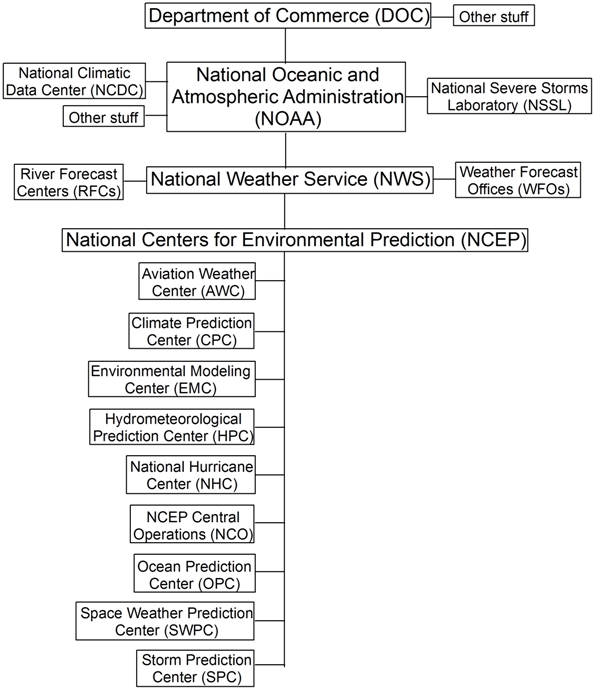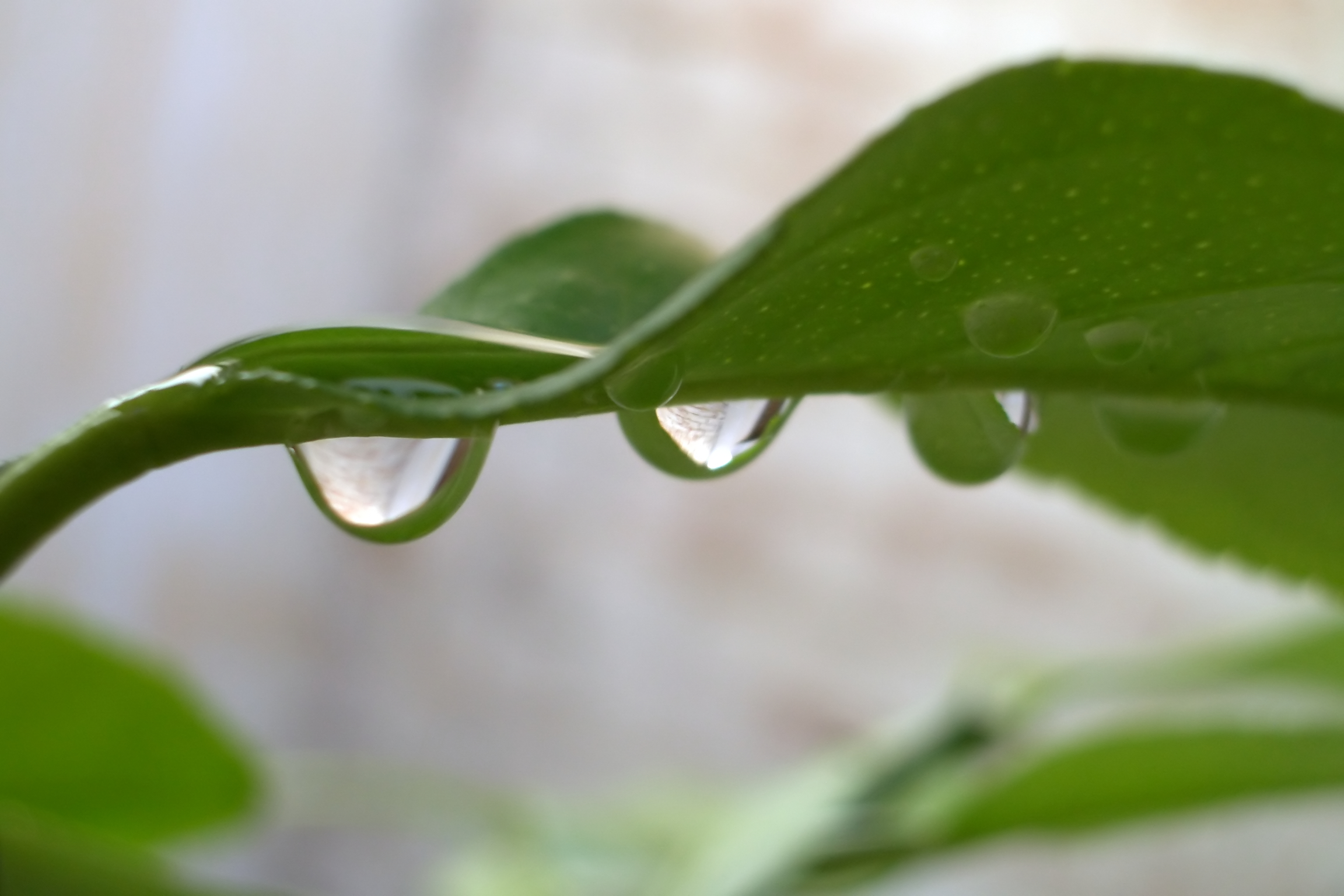01.13.11
NOAA / NWS Structure
Here’s how NOAA, the NWS, and all of those other weather-related offices you hear about are connected. For more, read on.
The National Oceanic and Atmospheric Administration (NOAA) is part of the Department of Commerce. NOAA’s basic mission is to forecast and research conditions of the oceans and atmosphere.
NOAA has many branches, including the National Climatic Data Center (NCDC) in Asheville, North Carolina, the world’s largest active archive of weather data; the National Severe Storms Laboratory (NSSL) in Norman, Oklahoma, a weather research department; and the National Weather Service (NWS), headquartered in Silver Spring, Maryland.
The National Weather Service also has a few branches, including what most people are most familiar with, the local weather forecast offices (WFOs). There are 122 WFOs across the U.S., each charged with the duty of issuing local forecasts and warnings to the general public. The NWS also has 13 River Forecast Centers (RFCs), each of which issues, well, river forecasts.
The National Centers for Environmental Prediction (NCEP), headquartered in Camp Springs, Maryland, is also part of the NWS. There are nine branches of NCEP:
- Aviation Weather Center (AWC) in Kansas City, Missouri – provides aviation warnings and forecasts of hazardous flight conditions for domestic and international air space
- Climate Prediction Center (CPC) in Camp Springs, Maryland – monitors and forecasts short-term climate fluctuations
- Environmental Modeling Center (EMC) in Camp Springs, Maryland – develops and improves numerical weather, climate, hydrological, and ocean prediction via research
- Hydrometeorological Prediction Center (HPC) in Camp Springs, Maryland – provides nationwide analysis and forecast products (with an emphasis on precipitation) out through seven days
- National Hurricane Center (NHC) in Miami, Florida – provides tropical weather forecasts and issues watches and warnings for the U.S. and surrounding areas
- NCEP Central Operations (NCO) in Camp Springs, Maryland – maintains and runs operational analyses and forecast models
- Ocean Prediction Center (OPC) in Camp Springs, Maryland – issues weather warnings and forecasts out to five days for the Atlantic and Pacific Oceans north of 30°N
- Space Weather Prediction Center (SWPC) in Boulder, Colorado – provides space weather alerts and warnings for disturbances that can affect people and equipment working in space and on earth
- Storm Prediction Center (SPC) in Norman, Oklahoma – provides tornado and severe thunderstorm watches for the contiguous U.S. along with a suite of hazardous weather forecasts
The National Weather Service was originally called the Weather Bureau. The Weather Bureau was established in 1870 under the War Department, but moved to the Department of Agriculture in 1890. In 1940, it was moved to the Department of Commerce, and in 1967, it became known as the National Weather Service. For more on the history of the NWS, see the NWS timeline and history pages.

